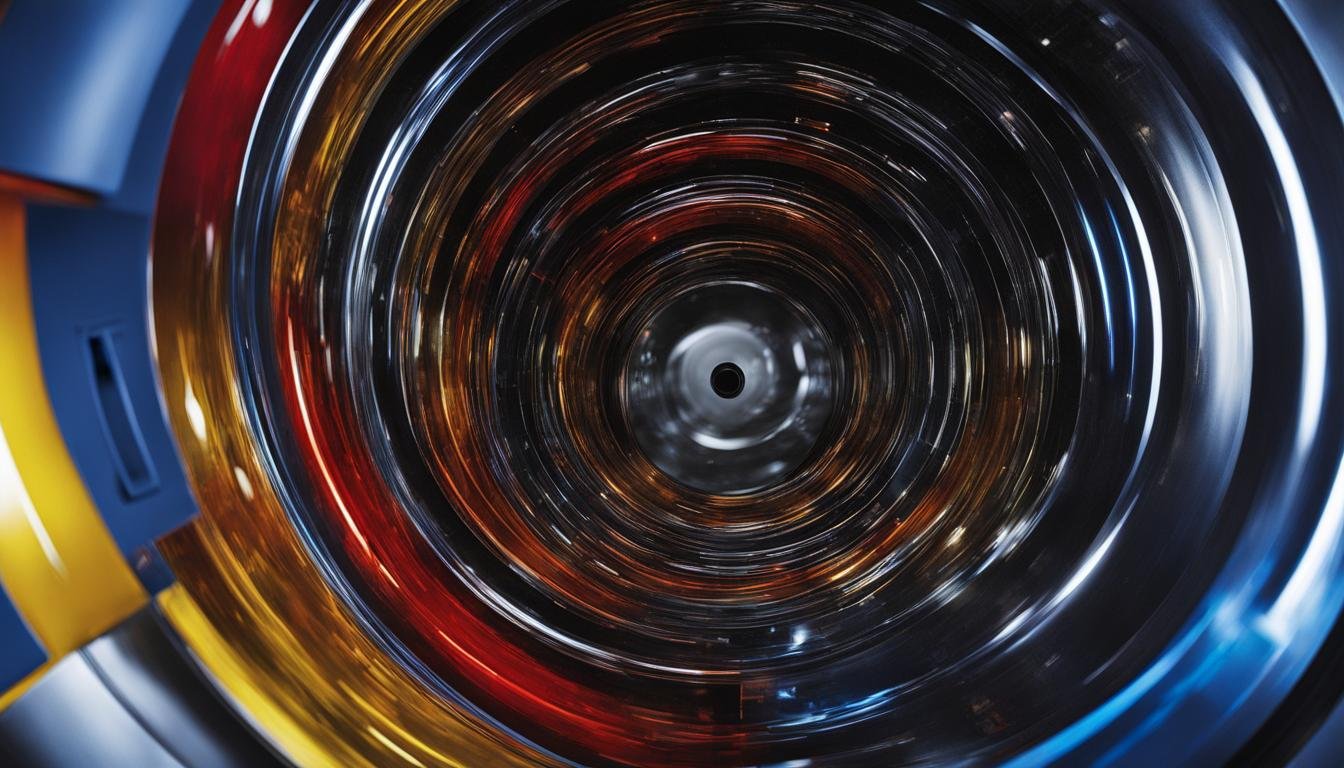Have you ever wondered if sound can travel in a vacuum cleaner? It seems counterintuitive, right? After all, a vacuum is known for creating a space devoid of air or any matter. But recent research has shown that sound can indeed traverse through a vacuum under specific conditions.
Physicists Zhuoran Geng and Ilari Maasilta from the University of Jyväskylä in Finland made a groundbreaking discovery. They found that when two solid objects, made of piezoelectric materials, are placed close together with a gap smaller than the wavelength of the sound wave, sound can tunnel through the vacuum. This phenomenon, known as complete acoustic tunneling, opens up new possibilities for various applications.
Key Takeaways:
- Under specific conditions, sound can be transmitted across a vacuum through complete acoustic tunneling.
- When two piezoelectric objects are close together with a gap smaller than the sound wave’s wavelength, sound can travel in a vacuum.
- This discovery has potential applications in fields such as microelectromechanical components and heat control.
- Sound typically requires a medium to propagate but can be transmitted in a vacuum through the inverse piezoelectric effect.
- Sound absorption and noise reduction techniques can be employed in vacuum cleaners to create quieter machines.
How Does Sound Propagate in a Vacuum?
Sound typically requires a medium to propagate, as it is generated by vibrations that cause atoms and molecules in the medium to vibrate. However, in the case of a perfect vacuum, which lacks any particles to vibrate, sound shouldn’t be able to travel.
Piezoelectric crystals, such as zinc oxide, provide a loophole as they can convert mechanical energy into electrical energy and vice versa. By utilizing the inverse piezoelectric effect, where a sound vibration exerts mechanical stress on the crystal, researchers have found that sound waves can be transmitted by converting the stress into an electrical field and then back into mechanical energy with a second crystal, allowing the sound to traverse the vacuum gap.
Sound Absorption in a Vacuum Cleaner
When it comes to vacuum cleaners, sound absorption is an important consideration for noise reduction. By incorporating appropriate soundproofing materials, vacuum cleaner manufacturers can create quieter machines that provide a more enjoyable user experience.
- Foam: Foam is a commonly used material for sound absorption due to its porous structure. It effectively traps sound waves, preventing their reflection and reducing noise levels.
- Bonded cotton: Bonded cotton is another option for soundproofing vacuum cleaners. It is known for its excellent sound-absorbing properties and is often used in acoustic insulation applications.
- Fiberglass: Fiberglass insulation is widely used for soundproofing purposes. Its fibers help to dissipate and absorb sound energy, minimizing noise transmission.
By utilizing these soundproofing materials, vacuum cleaners can be designed to minimize sound wave transmission and create a quieter cleaning experience.
Sound Absorption and Noise Reduction in Vacuum Cleaners
When it comes to creating a peaceful and less disruptive cleaning experience, sound absorption is a critical factor in the design of vacuum cleaners. Manufacturers understand the importance of minimizing the noise produced by their machines, and they employ various soundproofing techniques to achieve this goal.
One effective method is the integration of sound-absorbing materials into the vacuum cleaner’s construction. Materials such as foam, bonded cotton, and fiberglass are commonly used for their excellent sound absorption properties. These materials work by absorbing the incoming sound waves, preventing their reflection, and minimizing the transfer of sound within the device’s chambers.
By incorporating soundproofing techniques and utilizing appropriate sound-absorbing materials, vacuum cleaner manufacturers can significantly reduce operational noise, resulting in a quieter cleaning experience for users. Whether it’s the gentle hum of the motor or the whoosh of air being suctioned, the noise from a well-insulated vacuum cleaner is much more pleasant and less intrusive.
So, the next time you’re in the market for a new vacuum cleaner, consider models that prioritize sound insulation and soundproofing. You’ll be able to enjoy a cleaner home without the unwanted noise, making cleaning sessions a more peaceful and enjoyable endeavor.
FAQ
Can sound travel in a vacuum cleaner?
Sound requires a medium to propagate, so in a perfect vacuum, sound should not be able to travel. However, under specific conditions, researchers have discovered that sound can be transmitted across a vacuum using piezoelectric materials.
How does sound propagate in a vacuum?
Sound typically requires a medium to propagate, but piezoelectric crystals provide a loophole. These crystals can convert sound vibrations into electrical energy and vice versa. By utilizing the inverse piezoelectric effect, researchers have found that sound waves can be transmitted by converting mechanical stress into an electrical field and then back into mechanical energy, allowing the sound to traverse the vacuum gap.
What is the role of sound absorption in vacuum cleaners?
Sound absorption plays a crucial role in reducing noise in vacuum cleaners. Materials such as foam, bonded cotton, and fiberglass are commonly used to absorb incoming sound waves and prevent their reflection. This helps minimize the transfer of sound within the vacuum cleaner and from the machine to the surrounding environment, creating a quieter and more pleasant user experience.





Leave a Reply